Artificial intelligence is revolutionising everything from workflows to networking — so how can you bring AI into your research practice?


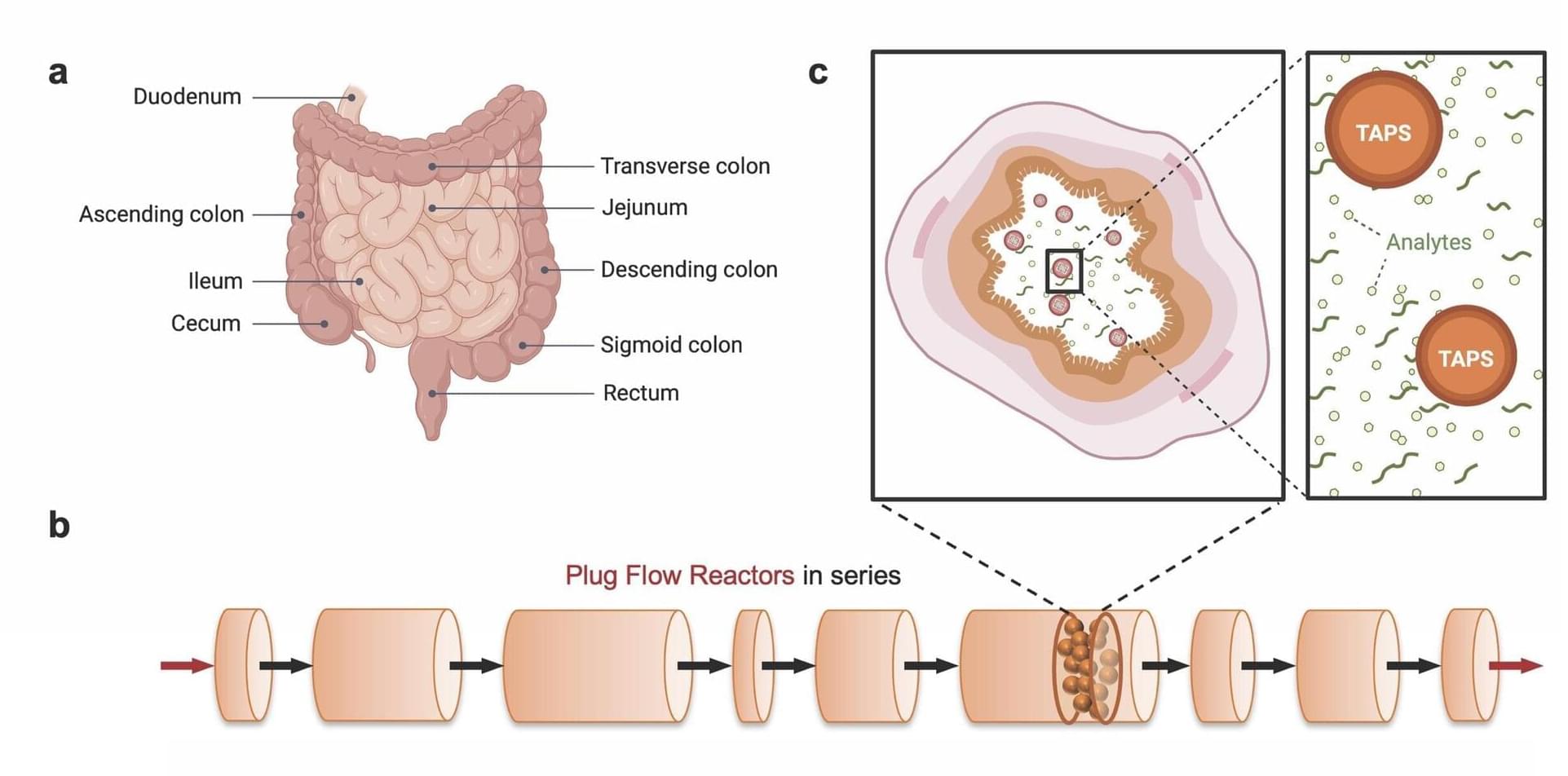
When synthesizing chemicals, stationary sensors can collect and communicate detailed data from within a reactor system. Physically installed sensors reach their limitations when it comes to mapping concentrations within a fluid flowing through hard-to-reach areas—particularly within long, narrow tubes.
While sensors can be placed on the reactor’s perimeter in an industrial setting, suspending sensors in the center of a pipe would disrupt flow. In a medical application, such as mapping chemical concentrations within the intestines to pinpoint internal bleeding, implanted sensors become impractical.
A new framework optimizes the use of time-aware particulate sensors (TAPS)—a tiny sensor that travels through the system and remembers when it encounters a target chemical—to map these uncharted areas.
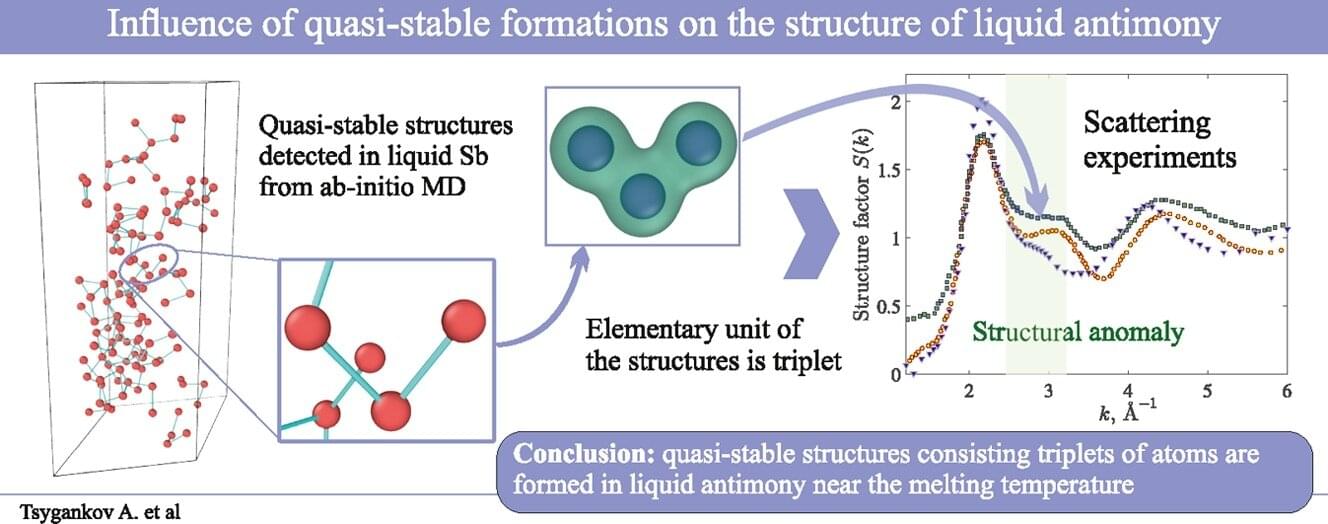
Antimony is widely used in the production of materials for electronics, as well as metal alloys resistant to corrosion and high temperatures.
“Antimony melt is interesting because near the melting point, the atoms in this melt can form bound structures in the form of compact clusters or extended chains and remain in a bound state for quite a long time. We found out that the basic unit of these structures are linked triplets of adjacent atoms, and the centers of mass of these linked atoms are located at the vertices of right triangles. It is from these triplets that larger structures are formed, the presence of which causes anomalous structural features detected in neutron and X-ray diffraction experiments,” explains Dr. Anatolii Mokshin, study supervisor and Chair of the Department of Computational Physics and Modeling of Physical Processes.
The computer modeling method based on quantum-chemical calculations made it possible to reproduce anomalies in the structure of molten antimony with high accuracy.

Researchers have created a unique wristwatch that contains multiple modules, including a sensor array, a microfluidic chip, signal processing, and a data display system to monitor chemicals in human sweat. Their study is published in the journal ACS Nano.
“It can continuously and accurately monitor the levels of potassium (K+), sodium (Na+), and calcium (Ca2+) ions, offering both real-time and long-term tracking capabilities,” said senior researcher Prof. Huang Xingjiu from the Institute of Solid State Physics at the Hefei Institutes of Physical Sciences of Chinese Academy of Sciences.
Tremendous progress has been made in sweat sensors based on electrochemical methods, making it easier to track body changes. The stability of the sensor chip is crucial for its application effect and service life, which is the key to ensuring the long-term reliable operation of the sensor.
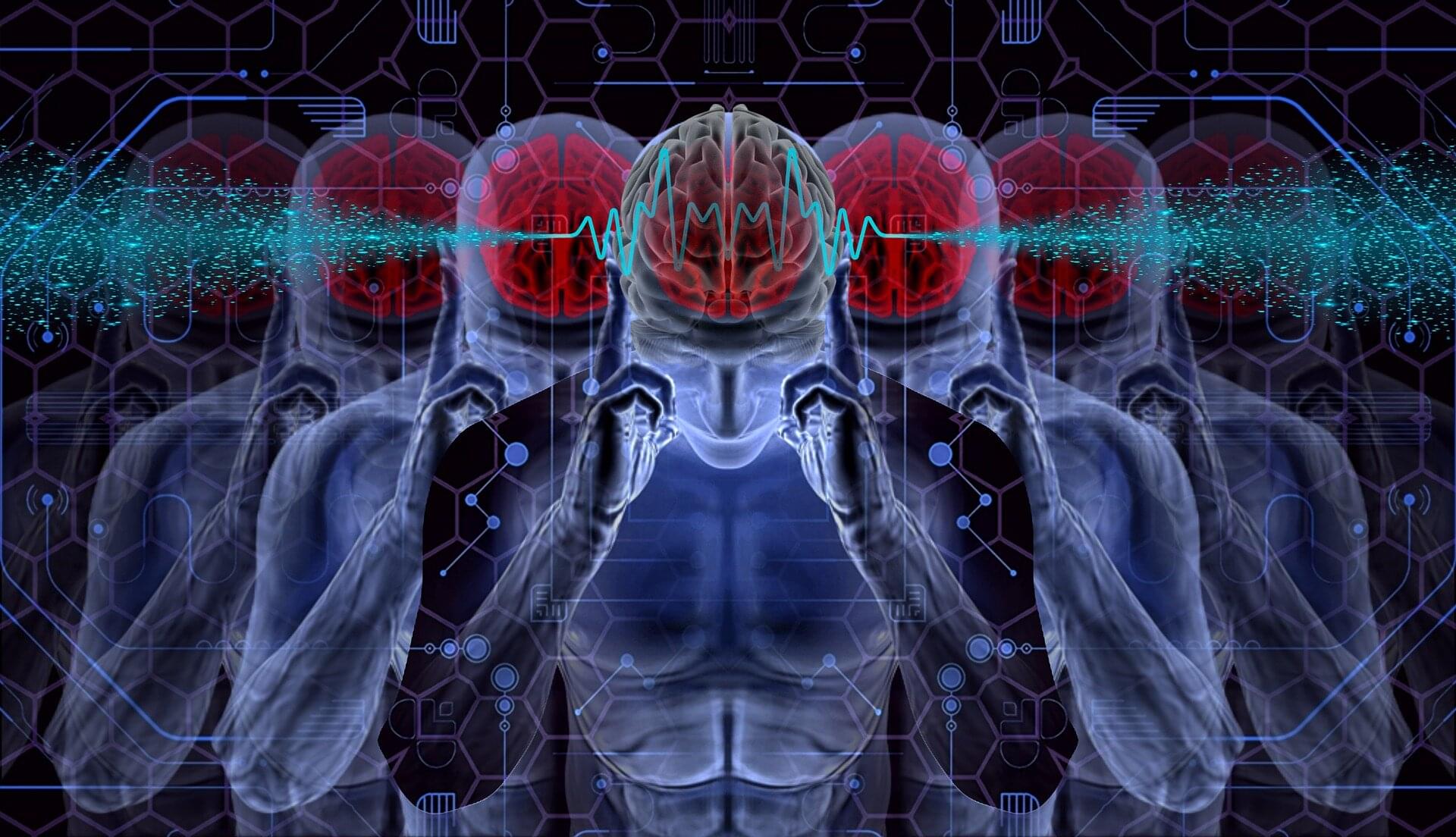
Children with attention deficit hyperactivity disorder (ADHD) do not have a behavioral disorder, nor are they lazy, or lacking in manners and boundaries. Their brains mature in a different way, with different patterns of neurological activity and a number of neurochemical differences. For this reason, ADHD is considered to be a neurodevelopmental disorder.
These neurological imbalances manifest as attention difficulties, disorganization, or hyperactivity and impulsivity. While these are most noticeable in childhood, where prevalence is estimated at 5%, ADHD can persist into adulthood, where prevalence is 2.5% of the population. ADHD can therefore have social, academic and occupational impacts throughout a person’s life.
Although there are risk factors (such as mothers smoking during pregnancy or low birth weight), these have not been shown to directly cause ADHD. Genetic factors play a more significant role, as 74% of cases are hereditary.
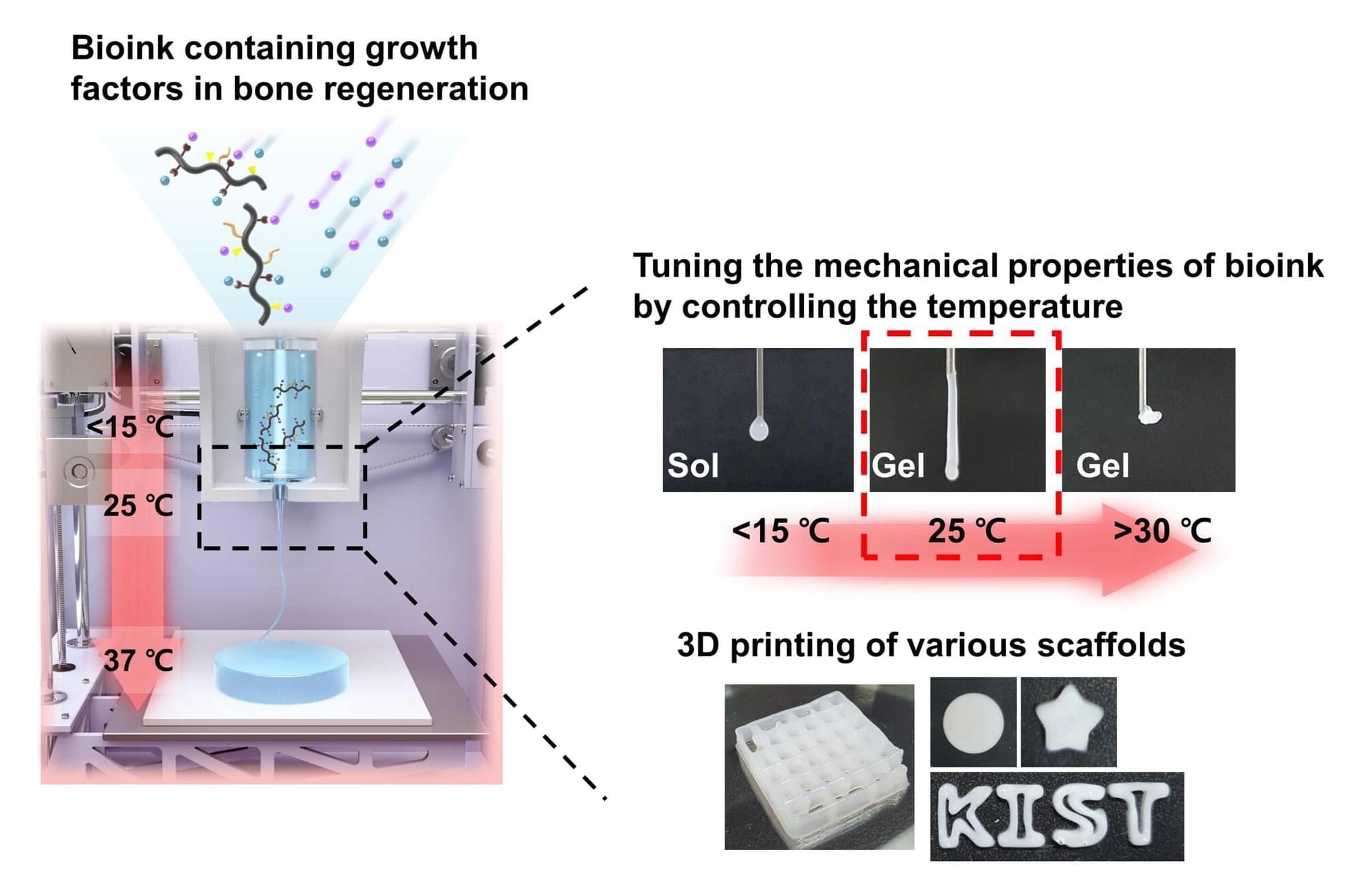
The development of biomaterials for artificial organs and tissues is an active area of research due to increases in accidental injuries and chronic diseases, along with the entry into a super-aged society. 3D bioprinting technology, which uses cells and biomaterials to create three-dimensional artificial tissue structures, has recently gained popularity. However, commonly used hydrogel-based bioinks can cause cytotoxicity due to the chemical crosslinking agent and ultraviolet light that connect the molecular structure of photocuring 3D-printed bioink.
Dr. Song Soo-chang’s research team at the Center for Biomaterials, Korea Institute of Science and Technology (KIST), revealed the first development of poly(organophosphazene) hydrogel-based temperature-sensitive bioink that stably maintained its physical structure by temperature control only without photocuring, induced tissue regeneration, and then biodegraded in the body after a certain period of time.
Current hydrogel-based bioinks must go through a photocuring process to enhance the mechanical properties of the 3D scaffold after printing, with a high risk of adverse effects in the human body. In addition, there has been a possibility of side effects when transplanting externally cultured cells within bioink to increase the tissue regeneration effect.
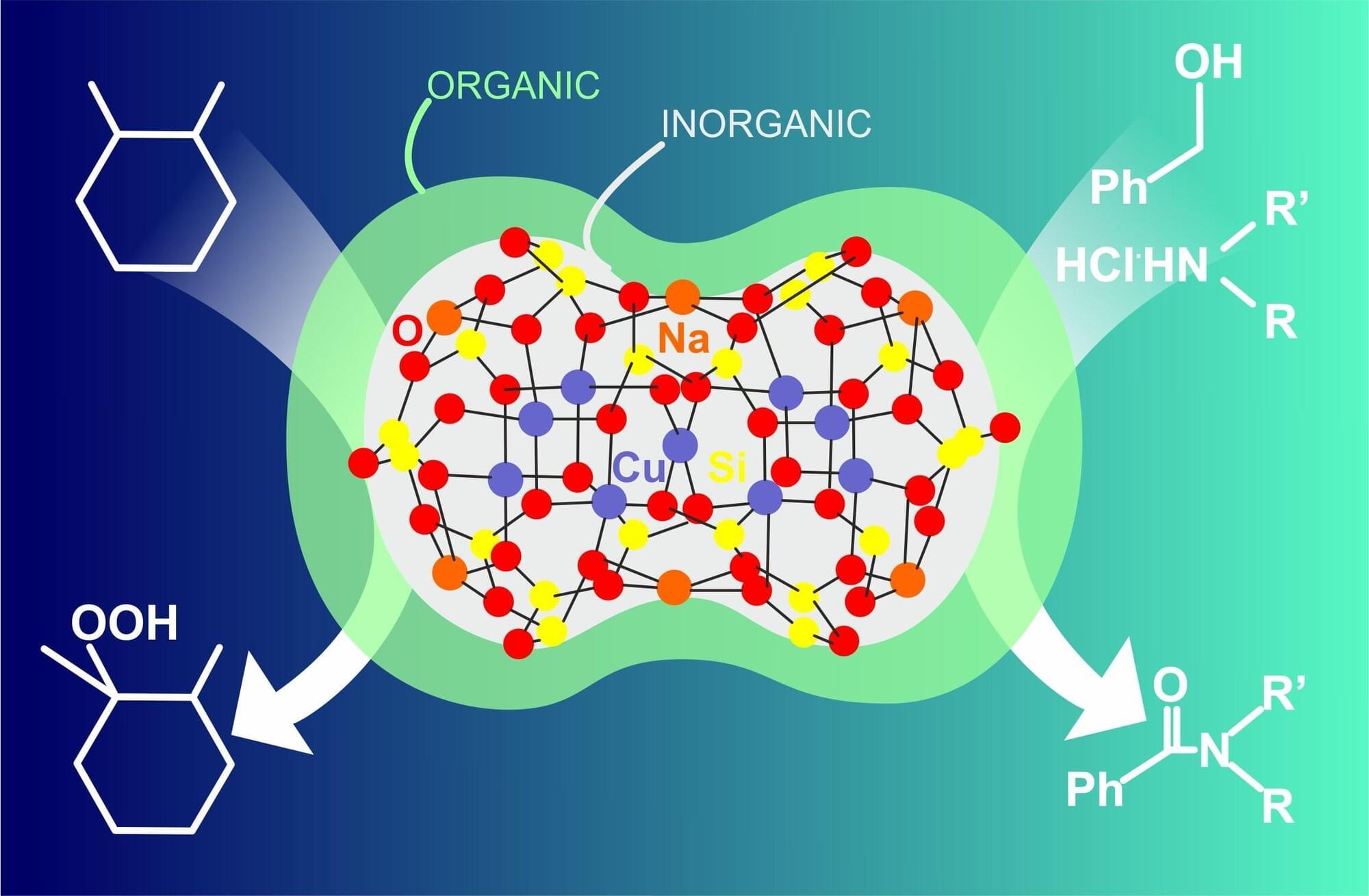
RUDN chemists have synthesized metal complexes on the basis of the organoelemental substance silsesquioxane that consists of an organic and an inorganic part. Such hybrid systems may be used as efficient catalysts, for example, to obtain alcohols from alkanes. The work was published in the Inorganic Chemistry journal.
Physical and chemical parameters of any material or substance are limited and cannot be infinitely improved. So scientists work on hybrid materials that combine different components and therefore demonstrate new properties. In modern chemistry, special attention is paid to compounds that consist of metal centers and organic “bridges” that keep them together. Such objects have a number of valuable properties and may be used for industrial purposes: catalysis, storage of gases, accurate separation of mixed substances. They can also be used to create chemical sensors and agents to deliver drugs to their targets in the body.
Hybrid organoelemental substances such as silsesquioxanes consist of an inorganic main chain Si-O-Si and an organic framework of Si atoms. Compounds like this can be formed when metal atoms are added to carcass structures with promising catalytic and magnetic properties. RUDN chemists suggested a new approach to such compounds based on the use of additional complex-forming substances (ligands).

Electrochemical stimuli-responsive materials are gaining more attention in the world of display technology. Based on external stimuli, such as low voltage, these materials can instantaneously undergo electrochemical reactions.
These electrochemical reactions can result in the production of different colors, enhancing display options. An electrochemical system consists of electrodes and electrolytes. Combining the luminescent and coloration molecules on the electrodes instead of the electrolyte can offer higher efficiencies and stability for display devices.
To this end, a research team from Japan employed clay membranes to effectively integrate the coloration and luminescence molecules. Their innovative dual-mode electrochemical device merges the ability to emit light and change color, offering a highly adaptable and energy-efficient solution for modern displays.
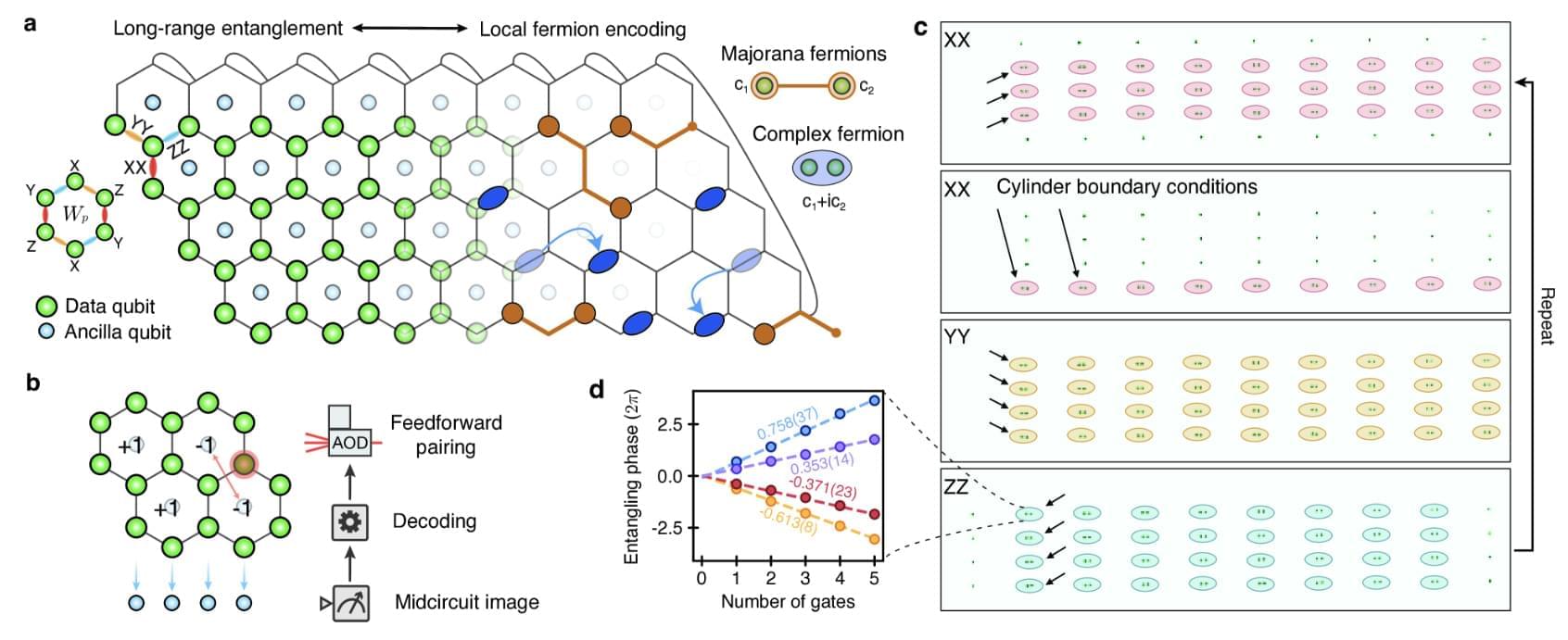

Summry: New research reveals that dopamine plays a crucial role in teaching young male mice to fight, with the chemical’s influence diminishing as they gain experience. In novice fighters, boosting dopamine increased aggression, while blocking it stopped them from fighting.
However, experienced fighters showed no changes in behavior regardless of dopamine manipulation, highlighting the role of experience in shaping aggression. The study identifies the lateral septum as a key brain region for “aggression learning” in males, but no similar effect was observed in females.